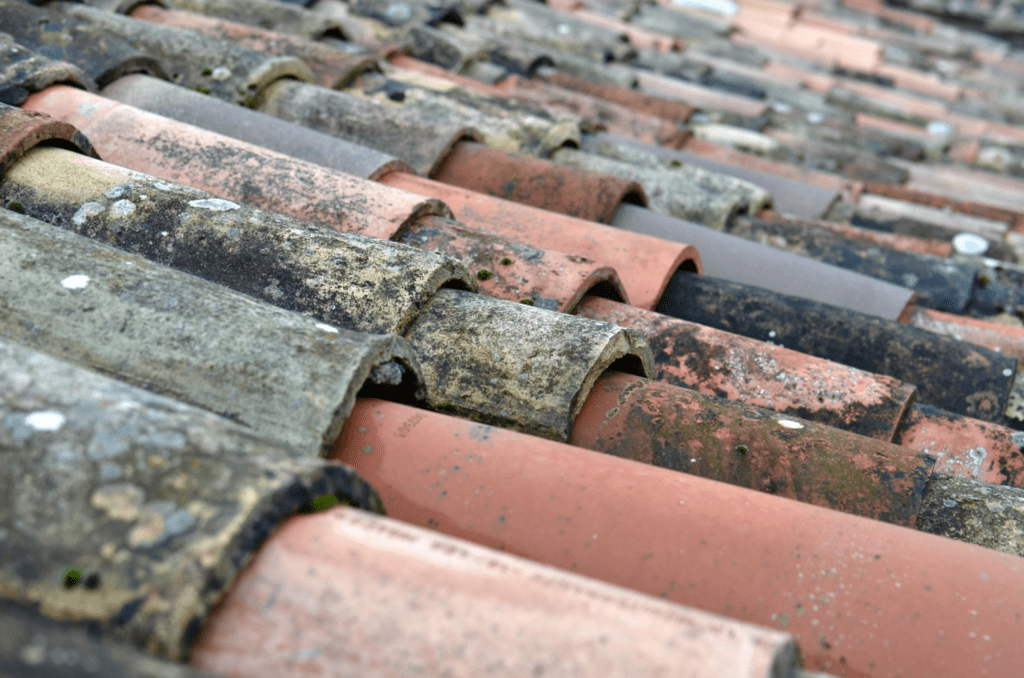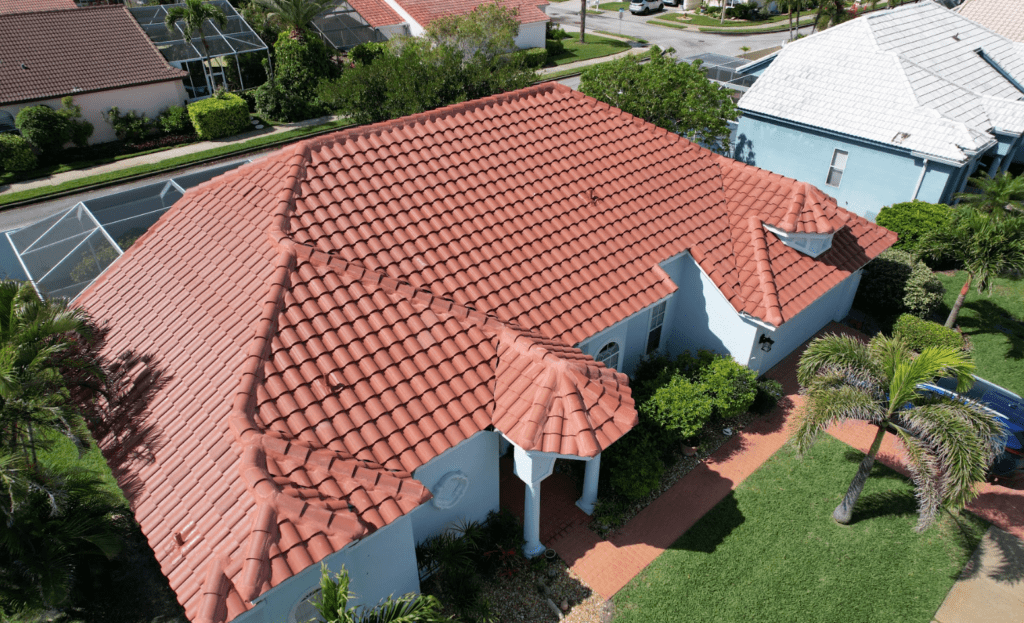Will Insurance Cover a 20 Year-old Roof
If your roof’s 20 years old, you might be wondering if insurance will still cover it. In Florida, the short answer is: maybe. It depends on your roof’s shape, when it was last checked, and what your policy says.
You’ve also gotta think about Florida’s weather. It wears roofs down faster than in other states. So insurers look harder at your roof’s condition, especially once it’s past 15 years.
Key Takeaways
- Florida law protects roofs under 15 years old from non-renewal.
- Older roofs need a certified inspection showing 5+ years of life.
- Roof condition matters more than age alone for coverage.
- Hurricane season adds risk, so upkeep really counts.
- Timely inspections and repair records help support claims.
Florida’s 15-Year Rule
Florida Statute 627.7011(5) says insurers can’t drop you just because your roof is under 15 years old. After that, they can request an inspection. If the inspector says it still has at least five years left, they can’t cancel coverage based on age alone.
So a 20-year-old roof doesn’t mean you’re out of luck. If it’s holding up well, you’ve still got options. This law was added to protect homeowners from losing coverage over roof age alone.
The key thing is: you’ve gotta prove it’s in decent shape. That’s where the inspection comes in. You can find more on this at MyFloridaCFO and Florida Senate Statute 627.7011.
Does Age Always Mean Denial?
Not really. Some people think insurance won’t even consider a roof once it hits the 20-year mark. That’s not exactly how it works. Insurers might pause and take a closer look, but they’re often more focused on how the roof’s been maintained than its age alone.
If your roof doesn’t show signs of damage, leaks, or major wear, some insurers will still offer coverage. They may just ask for an updated inspection or increase your deductible. But they won’t always deny you outright just because of the number on the calendar.
Older roofs make insurers a bit more cautious, of course, especially in Florida where weather can speed up deterioration. But if you’ve kept up with repairs, done regular inspections, and have records to show it, your roof could still meet the standard for coverage. That’s why those yearly checkups matter so much—they help keep your roof insurable.
How Florida’s Weather Changes the Game
Snow and ice aren’t much of a concern in Florida, but the same can’t be said for storms. With long periods of rain, strong winds, and hurricanes during the summer and fall months, Florida’s weather can really wear down a roof. All that pounding from wind and water, not to mention flying debris, adds up over time.
Hurricane season stretches from June through November, with the highest risk in August and September. That makes spring the best time to get your roof in check. The dry season—December through May—gives you a window to make repairs without the added pressure of storm threats.
That kind of climate means your roof takes a beating more often than it would in other places. Insurers know that, and they’ll expect you to stay ahead of it with regular upkeep. If your roof isn’t holding up, they may raise your premium, limit your coverage, or even decline to renew your policy.

Inspection Tips That Help Your Claim
Try setting up a roof inspection every spring before hurricane season begins. That gives you time to find and fix any issues that could worsen when storms hit. Fall inspections can also help spot wear from summer weather, especially if your area had heavy rain or strong wind.
After a major storm, don’t wait—have your roof looked at as soon as you can. Even if the damage looks small, it might lead to bigger problems later. Keep everything in one place: inspection reports, receipts for repairs, and dated photos showing the roof’s condition over time.
Having this kind of paper trail shows your insurer that you’ve been on top of things. That can make a big difference if you ever need to file a claim. It’s proof you’re not just reacting—you’ve been maintaining the roof all along.
Inspection Schedule for Florida Roofs
| Season/Event | Recommended Check | Notes |
| Spring (Mar–May) | Once per year | Prep for hurricane season |
| After Storms | As needed | Spot damage before it spreads |
| Fall (Oct–Nov) | Optional | Assess wear after wet season |
What’s Usually Covered?
Coverage depends on your policy type. Some pay for full replacement. Others subtract for age, which means less cash back. Either way, these are the basics usually covered:
- Wind or hail damage: These are some of the most common causes of roof problems in Florida. High winds can lift or break shingles, while hail can leave dents and cracks that compromise the roof’s structure.
- Debris from storms: Flying debris during hurricanes or heavy thunderstorms can strike the roof with enough force to break tiles, tear off flashing, or create holes that lead to leaks. Even falling branches from nearby trees can cause damage that’s covered.
- Sudden structural failure: If part of the roof caves in or collapses without warning due to a heavy storm or hidden water damage, that could qualify as a covered event. The key is that the damage has to be unexpected—not from long-term neglect or poor maintenance.
Everyday wear is generally considered normal aging, so most policies won’t pay for that. The same goes for damage caused by ignoring problems over time. If the roof has been leaking for months and no action was taken, an insurer might say that’s your responsibility.
And if there are pre-existing issues—like an old patch job or visible damage you never told the company about—those could be a problem too. Insurers usually expect that kind of damage to be documented and fixed right away.
So it’s not just about what happened, but when and how you handled it. That’s why being proactive with inspections and recordkeeping can help avoid claim denials later on.
It helps to read your policy, or better yet, call your agent and ask. And here’s something else worth checking: Does a New Roof Affect Home Insurance In Florida?
How To File a Claim the Right Way
If your roof takes a hit, contact your insurer right away. Waiting too long can hurt your case. Here’s what to do:
- Call your roofing insurance company and report the damage: Don’t wait too long—get in touch as soon as you notice a problem. Be ready to explain what happened, when you noticed it, and whether you’ve taken any steps to prevent further damage. Make sure you write down the claim number they give you.
- Share inspection reports, photos, and receipts: These documents help back up your story. Show the roof’s condition before and after the damage. The more details you can share—like dated photos or repair bills—the easier it is to prove your claim is legit.
- Get a repair estimate from a licensed contractor: Find someone local and certified who knows how to write a clear, detailed quote. A solid estimate not only speeds up the process, but it also shows the insurer what the real repair costs look like in your area.
Keep a folder—digital or physical—with all those records in one spot. That means inspection reports, repair receipts, before-and-after photos, and any emails or notes from your contractor. It’s a simple step, but when the insurer asks questions, you won’t be scrambling to pull things together.
And don’t lose track of your claim number. It’s the one thing every agent or adjuster will ask for again and again, especially if the process drags out over weeks.
While you’re organizing all that, it might also be a good time to compare your options for roof replacement vs. restoration. Depending on your roof’s condition and age, one might be a smarter move than the other.

Common Myths About Older Roofs
Some folks believe that once a roof reaches a certain age, roof insurance is automatically off the table. That’s not exactly true. While age is a factor, insurers tend to focus more on how well the roof has been maintained over the years. A roof that’s 20 years old but well cared for might still qualify for coverage if it’s in decent condition.
Insurers often consider whether the roof has been regularly inspected, repaired when needed, and documented properly. If you’ve stayed on top of maintenance, your roof has a better shot at staying covered. What matters more than the number of years is the evidence that your roof can still do its job.
There’s also the idea that wear and tear is never covered, but that’s not always the case. While standard wear usually isn’t part of your coverage, if that wear causes something unexpected—like a sudden collapse or leak after a storm—then it could be considered. It’s worth asking your agent to explain how they define and treat wear-related damage under your policy.
What Inspections Actually Do for You
Getting a professional inspection is one of the easiest ways to stay ahead of roof problems. These checkups can catch small issues before they grow into something much harder—and more expensive—to deal with. On top of that, inspections give you dated proof that your roof was in good condition, which can really help if you ever need to file a claim.
It’s a good idea to schedule an inspection every spring before storm season kicks in. That way, you’re not scrambling for repairs when hurricanes start rolling through. A fall inspection can also help you catch damage from summer weather and prep for the quieter months.
The worst thing you can do is wait until there’s a leak or sagging area before acting. Fixing a problem early usually means a quick patch or shingle replacement. Waiting too long might mean a full repair—or worse, a denial from your insurer who says you should’ve addressed it sooner.
Want a pro’s help?
Thinking About Policy Renewal?
As your roof starts to age, it’s a good idea to take a fresh look at your insurance policy before getting a new roof. Just because you haven’t had problems doesn’t mean everything’s still the same. Insurers sometimes change terms when your roof gets older, especially if it’s near or past the 15-year mark.
Make it a habit to review your policy at least once a year. If you’ve recently had repairs done or scheduled an inspection, that’s another reason to give it a closer look. Policy updates can happen without much notice, and it’s better to spot them before you actually need to file a claim.
Compare your policy against your latest inspection report. This helps you see if there’s any mismatch between what the roof needs and what the insurer covers. Don’t be shy about calling your agent either. They can tell you if anything’s changed—like a deductible increase, limited coverage, or new conditions tied to your roof’s age.
Here’s a table to show how age might affect your plan:
| Roof Age Range | Possible Impact on Policy |
| 0 – 10 years | Lower premiums, standard coverage |
| 10 – 20 years | Moderate changes, possible higher cost |
| Over 20 years | Closer review, limits may adjust |
Don’t Wait—Here’s What You Can Do Now
Worried your roof might be too old for insurance to cover? Then it’s a smart move to go ahead and schedule a professional inspection. That inspection isn’t just a routine check—it’s likely the first thing your insurance company will ask for before they even consider your claim or policy renewal.
If you haven’t been keeping up with records like inspection reports, repair receipts, or maintenance logs, now’s the time to start pulling those together. Insurers want proof that you’ve been maintaining the roof properly, and without documentation, it’s hard to argue your case. So don’t wait until there’s a problem—get ahead of it while things are still in your control.
Got questions about claims, repairs, or coverage? Visit Wescon Construction to learn more and get help with the next steps.
Conclusion
Just because your roof is 20 years old doesn’t mean it’s time to give up on insurance coverage. In Florida, laws are in place to give you some protection, especially if your roof is still structurally sound. With the right maintenance, regular inspections, and documentation to back it all up, you’ve still got a chance to keep your policy in place.
Living in Florida means your roof deals with more wear than in many other places. Storms, humidity, and heat all add pressure over time. That’s why staying ahead with routine care and keeping your records straight is so important—because when it’s time to renew, insurers will be looking for those signs of responsibility.
It’s always better to prepare than be surprised. Roofs in this state age fast, but if you stay proactive, you can keep your coverage, avoid sudden costs, and keep your home safe and sound.
Need Expert Advice on Your Roofing Project? Contact us today!
"*" indicates required fields
